
Equestrianism, commonly known as horse riding or horseback riding, includes the disciplines of riding, driving, and vaulting. This broad description includes the use of horses for practical working purposes, transportation, recreational activities, artistic or cultural exercises, and competitive sport.

Rodeo is a competitive equestrian sport that arose out of the working practices of cattle herding in Spain and Mexico, expanding throughout the Americas and to other nations. It was originally based on the skills required of the working vaqueros and later, cowboys, in what today is the western United States, western Canada, and northern Mexico. Today, it is a sporting event that involves horses and other livestock, designed to test the skill and speed of the cowboys and cowgirls. American-style professional rodeos generally comprise the following events: tie-down roping, team roping, steer wrestling, Steer roping, saddle bronc riding, bareback bronc riding, bull riding and barrel racing. The events are divided into two basic categories: the rough stock events and the timed events. Depending on sanctioning organization and region, other events such as breakaway roping, goat tying, and pole bending may also be a part of some rodeos. The "world's first public cowboy contest" was held on July 4, 1883, in Pecos, Texas, between cattle driver Trav Windham and roper Morg Livingston.

Pawnee is a city and county seat of Pawnee County, Oklahoma, United States. The town is northeast of Stillwater at the junction of U.S. Route 64 and State Highway 18.
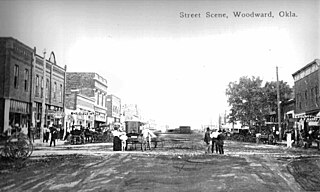
Woodward is a city in and the county seat of Woodward County, Oklahoma, United States. It is the largest city in a nine-county area. The population was 12,133 at the time of the 2020 census.
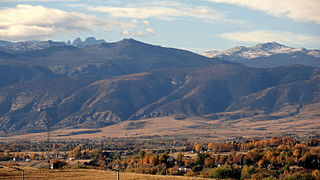
Sheridan is a city in the U.S. state of Wyoming and the county seat of Sheridan County. The city is located halfway between Yellowstone Park and Mount Rushmore by U.S. Route 14 and 16. It is the principal town of the Sheridan, Wyoming, Micropolitan Statistical Area which encompasses all of Sheridan County. The 2020 census put the city's population at 18,737, making it the 6th most populous city in Wyoming.

A cowboy is an animal herder who tends cattle on ranches in North America, traditionally on horseback, and often performs a multitude of other ranch-related tasks. Cattle drives ensure the herds health in finding pasture and bring them to market. The historic American cowboy of the late 19th century arose from the vaquero traditions of northern Mexico and became a figure of special significance and legend. A subtype, called a wrangler, specifically tends the horses used to work cattle. In addition to ranch work, some cowboys work for or participate in rodeos. Cowgirls, first defined as such in the late 19th century, had a less-well documented historical role, but in the modern world work at identical tasks and have obtained considerable respect for their achievements. Cattle handlers in many other parts of the world, particularly South America and stockmen and jackaroos in Australia, perform work similar to the cowboy.
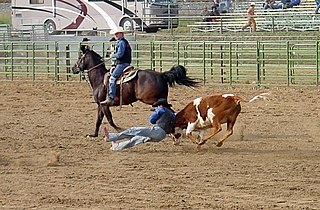
Steer wrestling, also known as bulldogging, is a rodeo event in which a horse-mounted rider chases a steer, drops from the horse to the steer, then wrestles the steer to the ground by grabbing its horns and pulling it off-balance so that it falls to the ground. The event carries a high risk of injury to the cowboy. Some concerns from the animal-rights community express that the competition may include practices that constitute cruelty to animals, but the injury rate to animals is less than 0.05%. A later PRCA survey of 60,971 animal performances at 198 rodeo performances and 73 sections of "slack" indicated 27 animals were injured, again around 0.05%.

Chaps are sturdy coverings for the legs consisting of leggings and a belt. They are buckled on over pants with the chaps' integrated belt, but unlike trousers, they have no seat and are not joined at the crotch. They are designed to provide protection for the legs and are usually made of leather or a leather-like material. Their name is a shortened version of the Spanish word chaparajos. Chaparajos were named after the chaparral, from which they were designed to protect the legs while riding on horseback. Like much of western American horse culture, the origin of chaparajos was in the south of Spain, from which it then passed on to the part of New Spain that later became Mexico, and has been assimilated into cowboy culture of the American West. They are a protective garment to be used when riding a horse through brushy terrain. In the modern world, they are worn for both practical work purposes and for exhibition or show use. Chaps have also been adopted for use on motorcycles, particularly by cruiser-style motorcycle riders.

The cowboy hat is a high-crowned, wide-brimmed hat best known as the defining piece of attire for the North American cowboy. Today it is worn by many people, and is particularly associated with ranch workers in the western and southern United States, western Canada and northern Mexico, with many country, regional Mexican and sertanejo music performers, and with participants in the North American rodeo circuit. It is recognized around the world as part of Old West apparel.
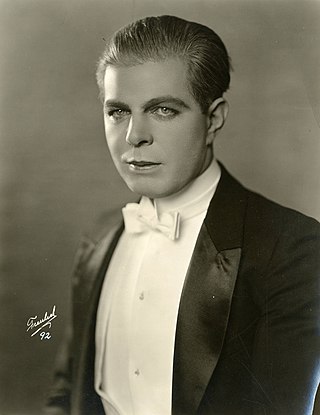
Edmund Richard "Hoot" Gibson was an American rodeo champion, film actor, film director, and producer. While acting and stunt work began as a sideline to Gibson's focus on rodeo, he successfully transitioned from silent films to become a leading performer in Hollywood's growing cowboy film industry.

Western wear is a category of men's and women's clothing which derives its unique style from the clothes worn in the 19th century Wild West. It ranges from accurate historical reproductions of American frontier clothing, to the stylized garments popularized by Western film and television or singing cowboys such as Gene Autry and Roy Rogers in the 1940s and 1950s. It continues to be a fashion choice in the West and Southwestern United States, as well as people associated with country music or Western lifestyles, for example the various Western or Regional Mexican music styles. Western wear typically incorporates one or more of the following: Western shirts with pearl snap fasteners and vaquero design accents, blue jeans, cowboy hat, a leather belt, and cowboy boots.
Western lifestyle or cowboy culture is the lifestyle, or behaviorisms, of, and resulting from the influence of, the attitudes, ethics and history of the American western cowboy. In the present day these influences affect this sector of the population's choice of recreation, western wear, partaking of western cuisine and Southwestern cuisine, and enjoyment of the western genre and western music.

Earl Wesley Bascom was an American Canadian painter, printmaker, sculptor, cowboy, rodeo performer, inventor, and Hollywood actor. Raised in Canada, he portrayed in works of fine art his own experiences of cowboying and rodeoing across the American and Canadian West. Bascom was awarded the Pioneer Award by the ProRodeo Hall of Fame in 2016 and inducted into several halls of fame including the Canadian Pro Rodeo Hall of Fame in 1984. Bascom was called the "Cowboy of Cowboy Artists," the "Dean of Rodeo Cowboy Sculpture" and the "Father of Modern Rodeo." He was a participant member of the Church of Jesus Christ of Latter-day Saints.

A cowboy church is a Christian church that embraces the cowboy and Western lifestyle.

The culture of Texas is often considered one of the major cultures influencing the greater American culture. Texas is one of the most populous and heavily populated American states in its urban centers and has seen tremendous waves of migration out of the American North and West, in contrast to its eastern neighbors in the Deep South. But it retains the regionalisms and distinct cultural identities of German Texan, Tejanos, Cajuns, Irish, African American, and White Southern enclaves established before the republic era and admission to statehood.

Wild West shows were traveling vaudeville performances in the United States and Europe that existed around 1870–1920. The shows began as theatrical stage productions and evolved into open-air shows that depicted romanticized stereotypes of cowboys, Plains Indians, army scouts, outlaws, and wild animals that existed in the American West. While some of the storylines and characters were based on historical events, others were fictional or sensationalized.
History of rodeo tracks the lineage of modern Western rodeo.

Georgian horsemen were notable participants of the Wild West shows in the 1890s. Billed as Russian Cossacks, the riders from Georgia featured in circuses and shows well into the first half of the 20th century. Their performances, featuring trick riding and folk dance, were extremely popular and exerted significant influence on cowboys in the United States.
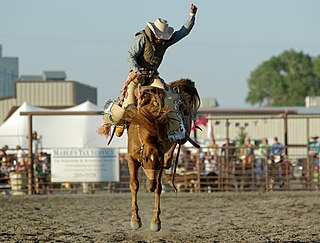
A bucking horse is any breed of horse, male or female, with a propensity to buck. They have been, and still are, referred to by various names, including bronco, broncho, and roughstock.
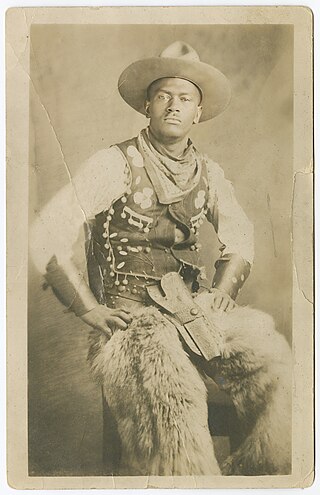
Black cowboys in the American West accounted for up to an estimated 25% of cowboys "who went up the trail" from the 1860s to 1880s and substantial but unknown percentage in the rest of the ranching industry, estimated to be at least 5,000 workers according to recent research.

















